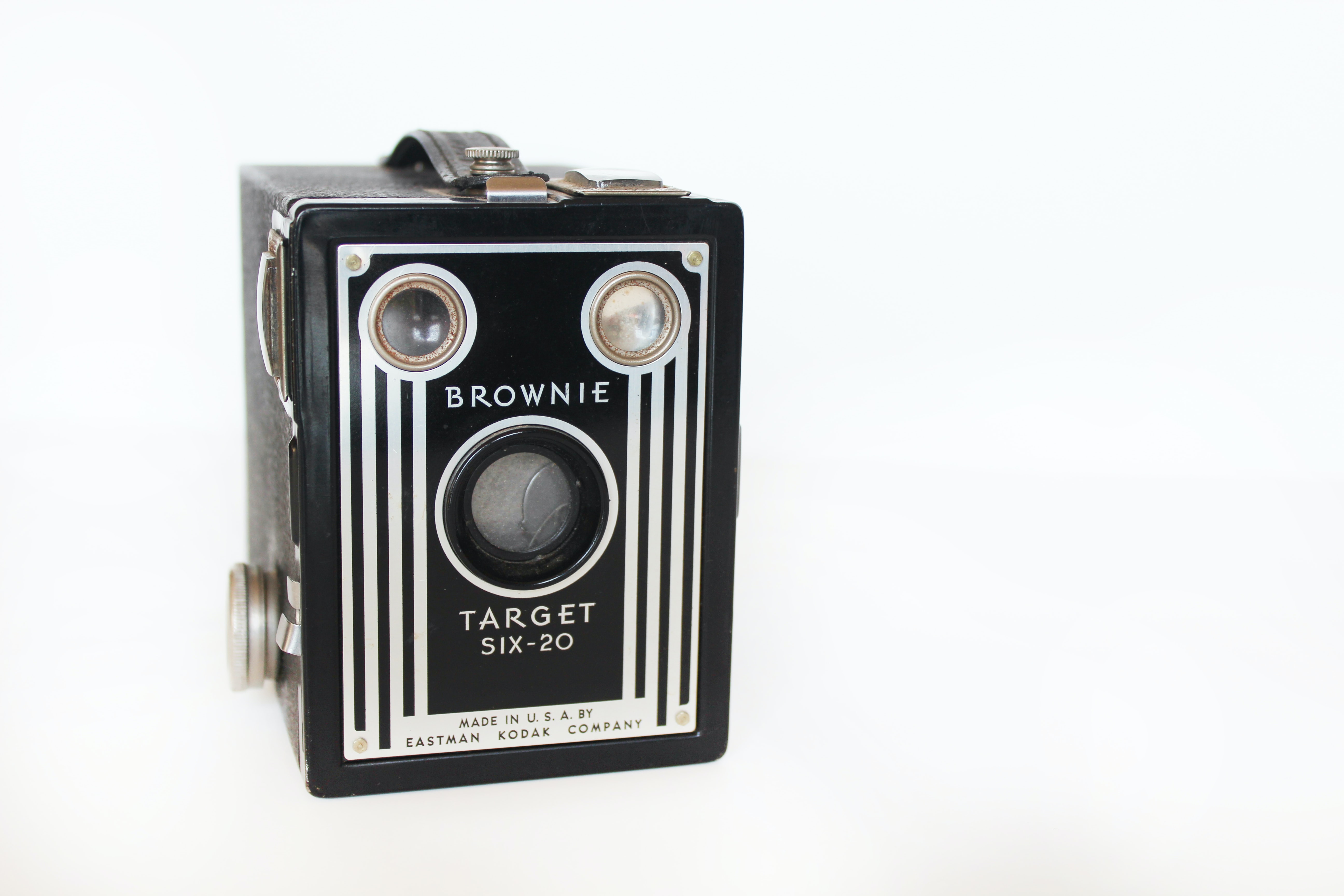Go back in time with snapshot photography…
Let’s caption, imagine the stories behind, and illustrate vernacular photographs from the Museum’s collection!
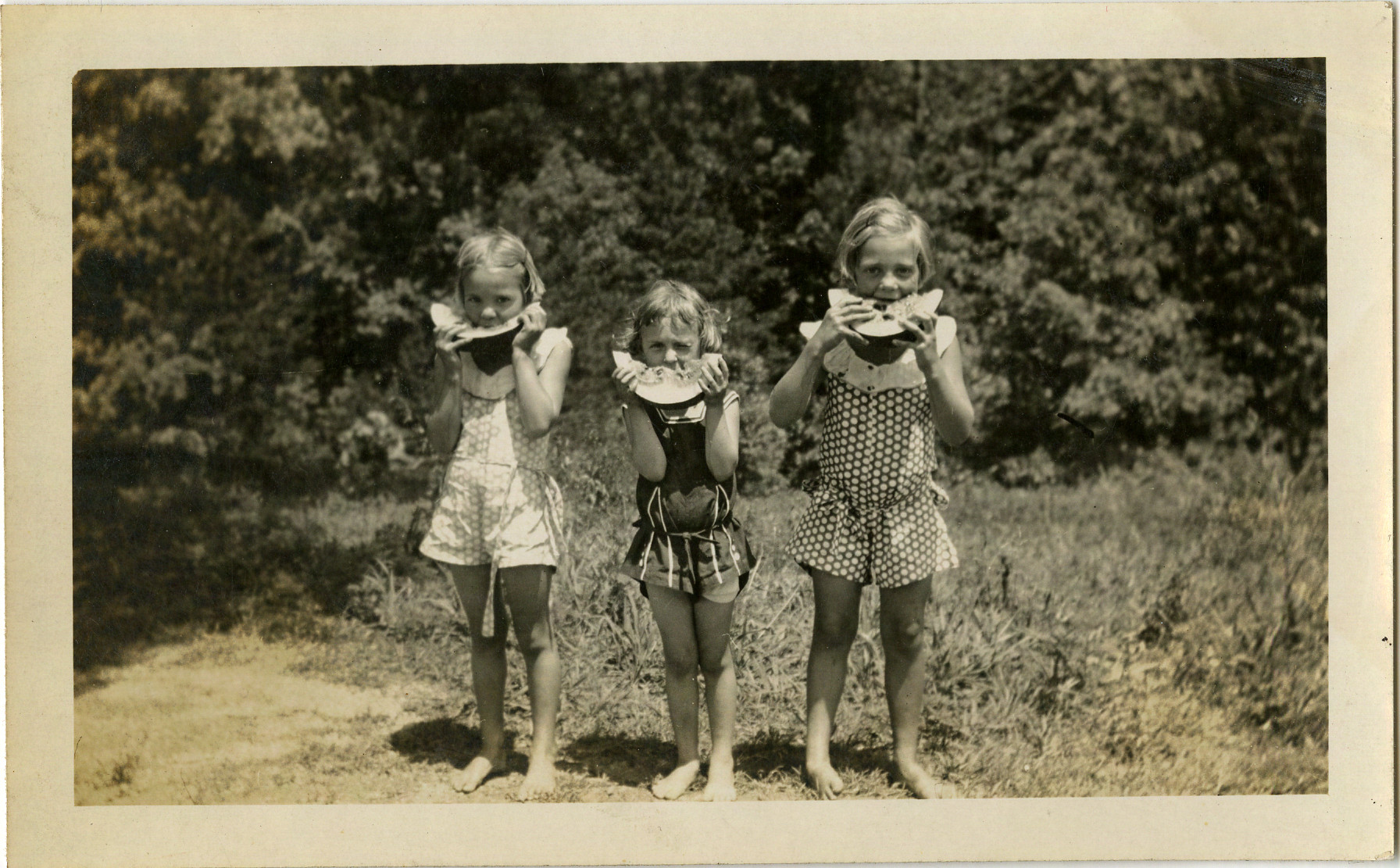
Children eating watermelon, circa 1950
Photography that is done by amateurs to capture everyday life is called snapshot photography. Speaking more broadly, if a photograph is taken for non-artistic purposes, such as to document family life, or for commercial, scientific, forensic, or government purposes, it is called vernacular photography.
The rise of snapshot and vernacular photography would not have been possible without the emergence of cameras such as the Eastman Kodak Company’s Kodak camera in the late 19th century. By the mid-twentieth century, handheld cameras like the Kodak’s Brownie and Polaroid cameras became a staple in many American households for the documentation of birthdays, graduations, weddings, and other family events.
Here at the Bowdoin College Museum of Art (BCMA), we have a large collection of previously discarded snapshot photographs bought at flea markets and online auctions donated by the photo collector Peter Cohen. Captured by amateurs across the country, these photographs of stranger’s everyday lives show us what the world looked like 40, 50, and even 100 years ago!
Many photos in the Museum’s collection of snapshot photography feature written text directly on or in the margins of photographs. Many snapshot photos from the early to mid-twentieth century were made to be added to a family album, and text ranging from lighthearted and witty commentary to informational captions were common to provide context. Look below at two photos from the collection.
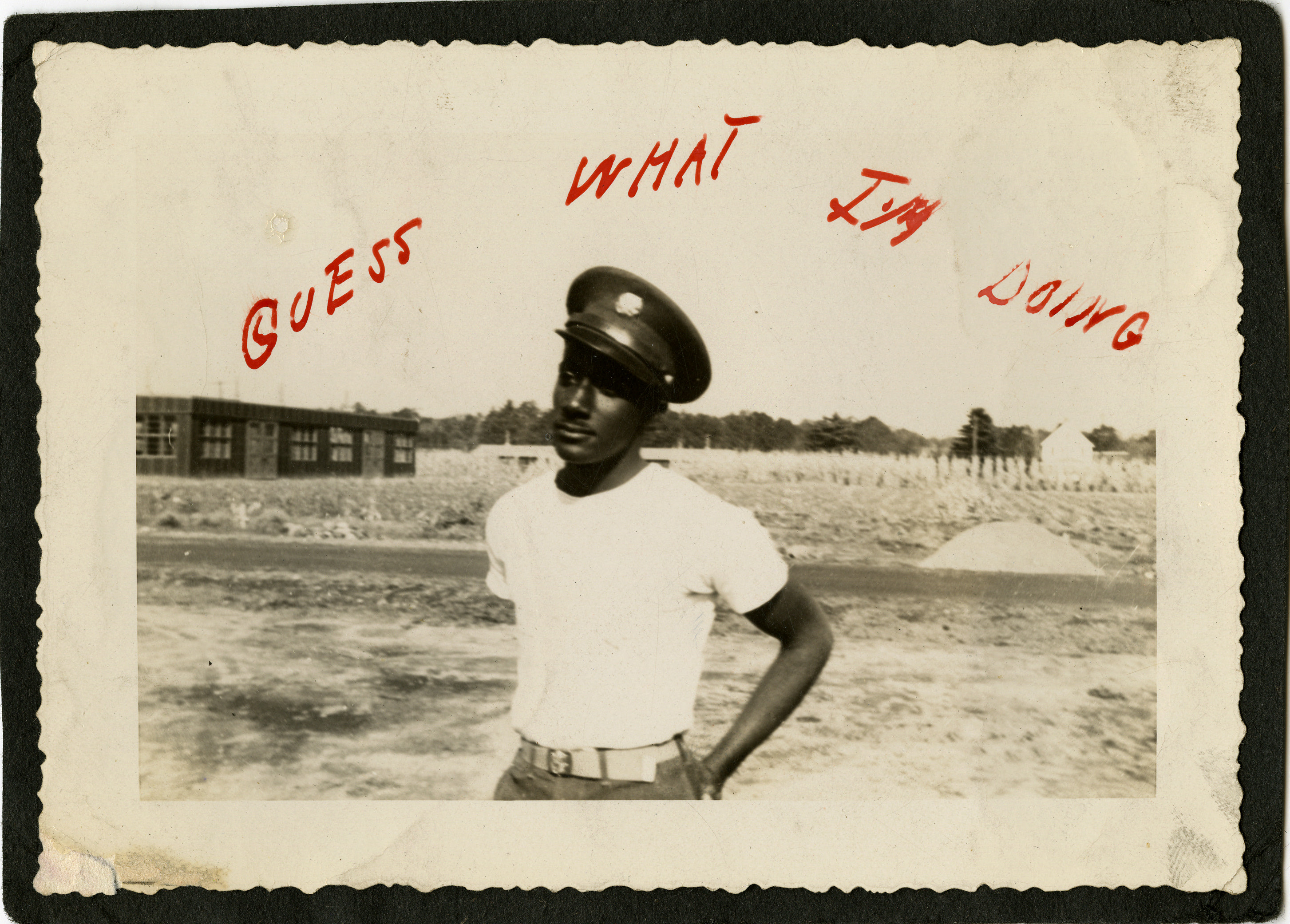 Guess What I'm Doing, ca. 1945, gelatin silver print. Gift of Peter Cohen. Bowdoin College Museum of Art.
Guess What I'm Doing, ca. 1945, gelatin silver print. Gift of Peter Cohen. Bowdoin College Museum of Art.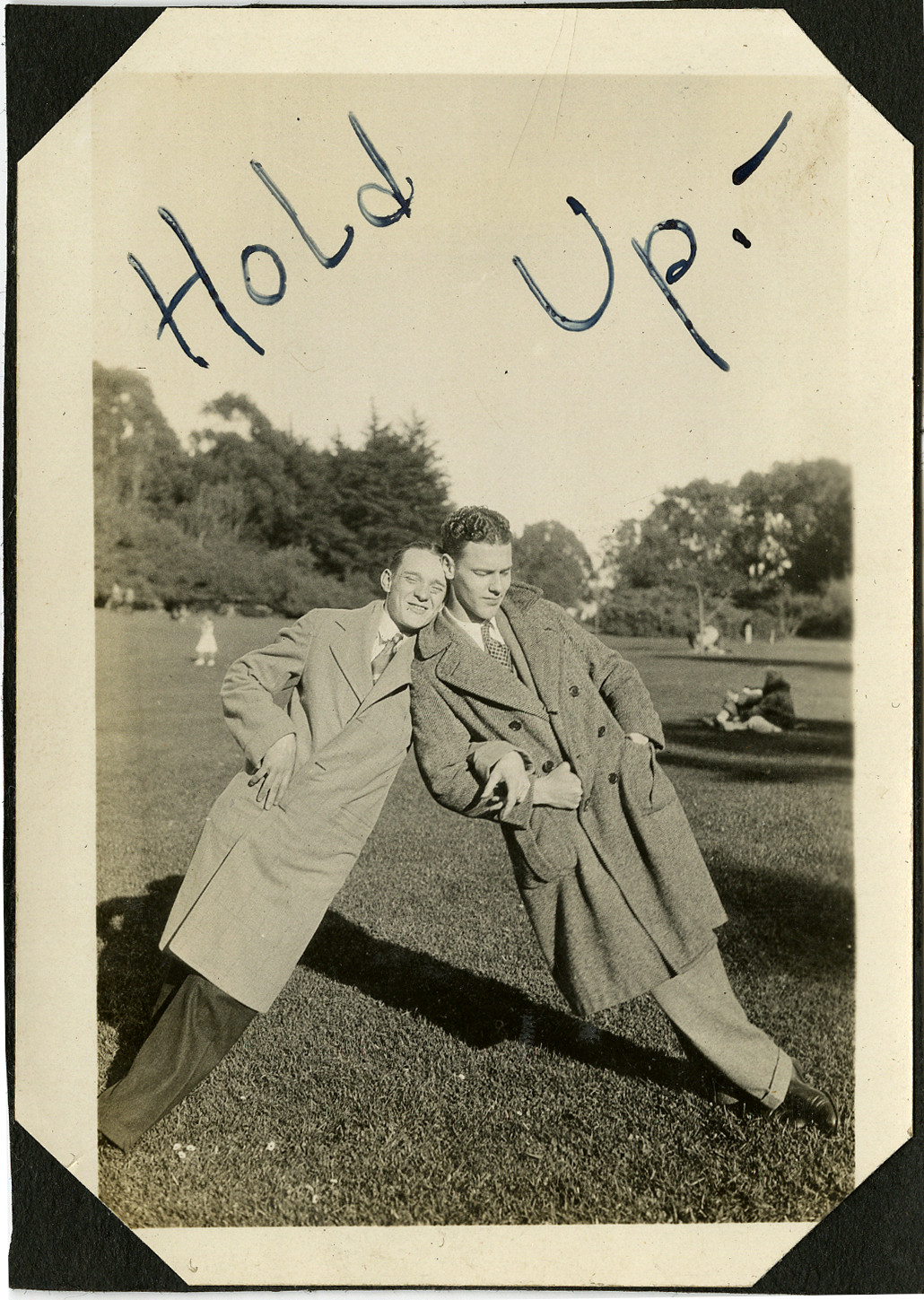 Hold Up, ca. 1950, gelatin silver print. Gift of Peter Cohen. Bowdoin College Museum of Art.
Hold Up, ca. 1950, gelatin silver print. Gift of Peter Cohen. Bowdoin College Museum of Art.Even though these pictures do not belong to their original owners, these captions provide a deeper understanding of the photographer’s relationship to the people pictured.
Now, let’s look at some photographs that don’t feature any captions…
Based on the photographs you’ve seen from the collection and perhaps your own experience with captioning pictures for a family album or Instagram posts, how would you caption these photos below?
Click on a photograph below to add your own caption.
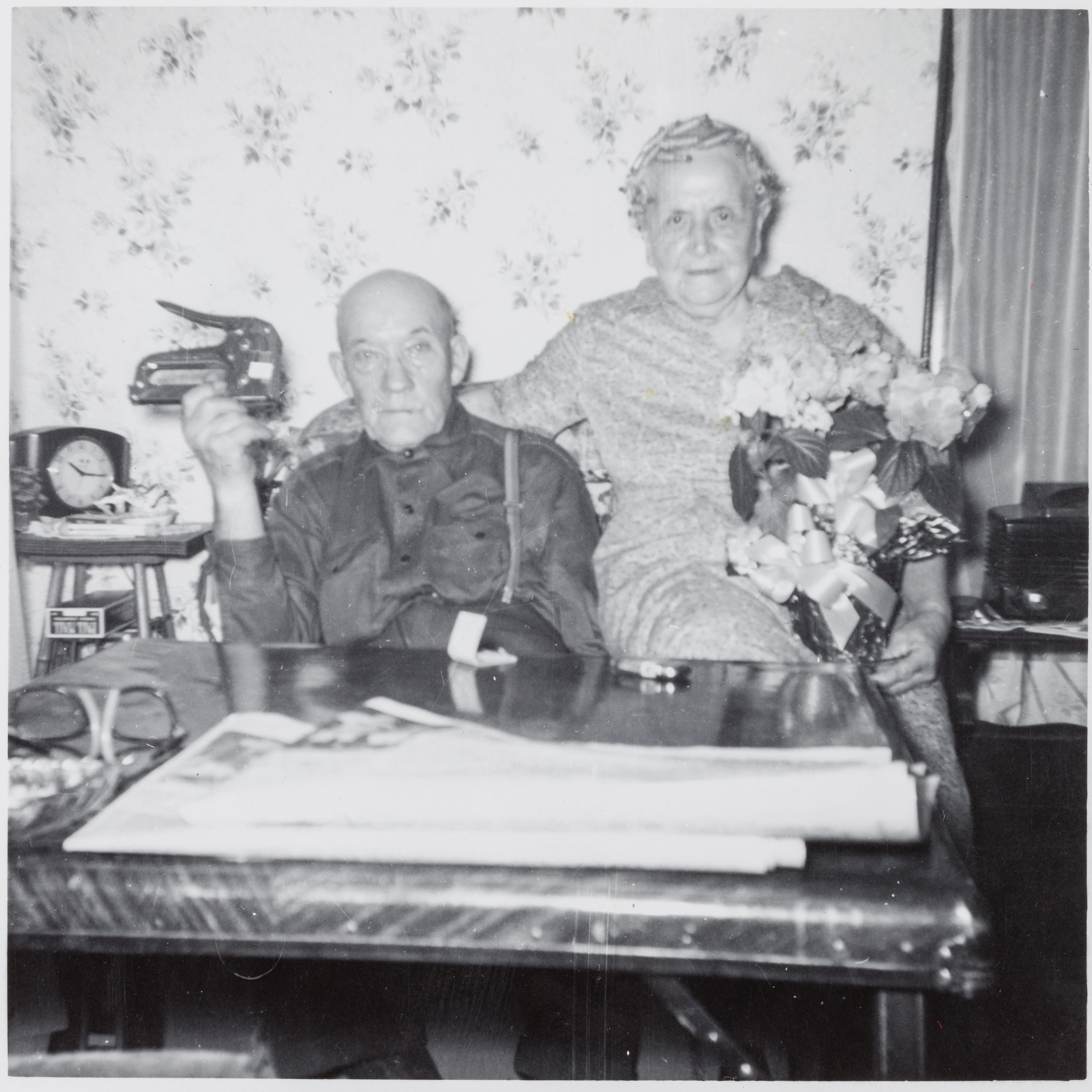 Untitled (Vernacular photograph), mid-twentieth century, gelatin silver print, Gift of Peter Cohen, Bowdoin College Museum of Art, (2016.51.104)
Untitled (Vernacular photograph), mid-twentieth century, gelatin silver print, Gift of Peter Cohen, Bowdoin College Museum of Art, (2016.51.104) Save
 Untitled (Vernacular photograph), mid-twentieth century, gelatin silver print, Gift of Peter Cohen, Bowdoin College Museum of Art, (2016.51.32)
Untitled (Vernacular photograph), mid-twentieth century, gelatin silver print, Gift of Peter Cohen, Bowdoin College Museum of Art, (2016.51.32) Save
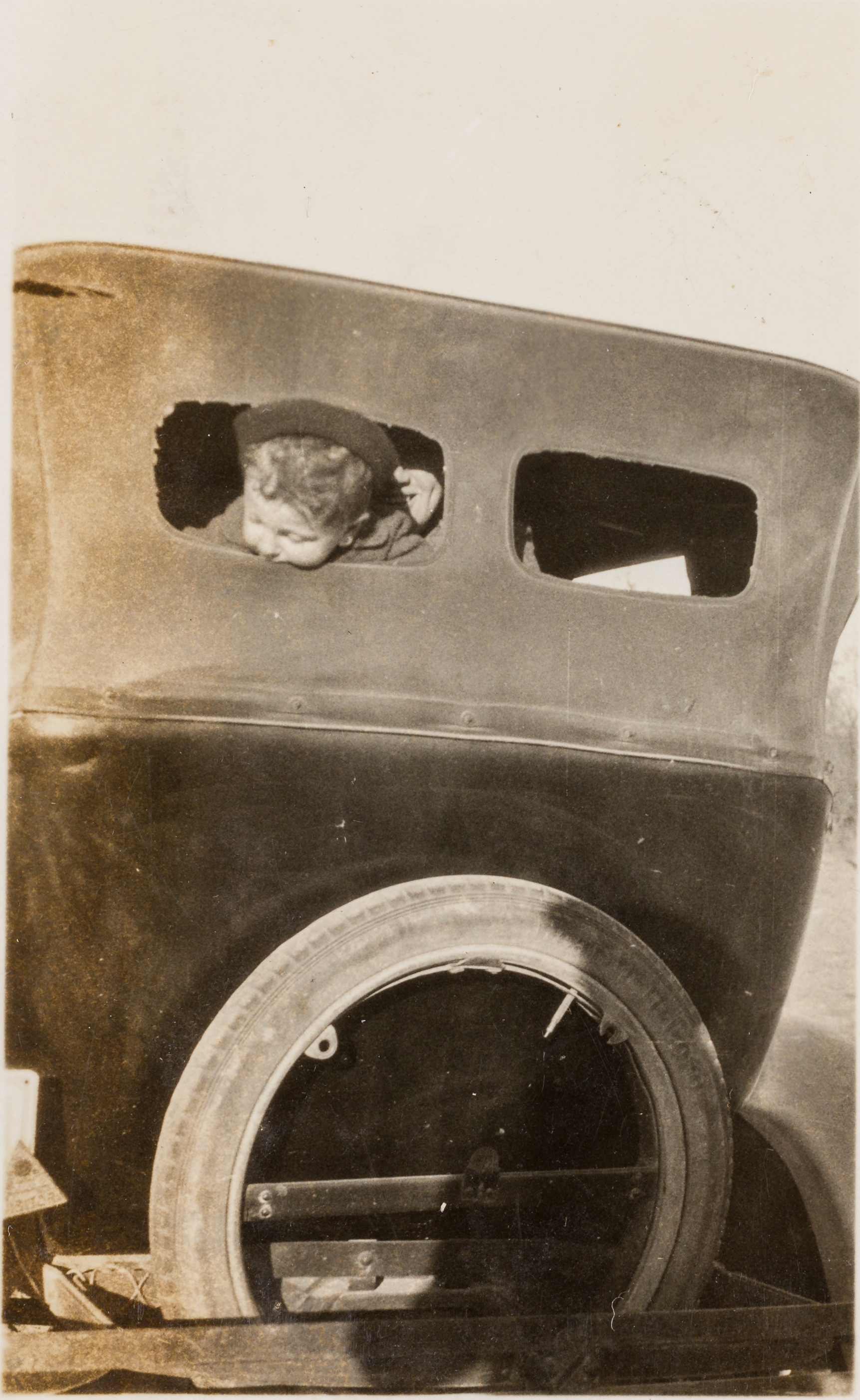 Untitled (Vernacular photograph), mid-twentieth century, gelatin silver print, Gift of Peter Cohen, Bowdoin College Museum of Art, (2016.51.50)
Untitled (Vernacular photograph), mid-twentieth century, gelatin silver print, Gift of Peter Cohen, Bowdoin College Museum of Art, (2016.51.50) Save
One of the hallmarks of snapshot photography is the inherent familiarity in them—many of these pictures look like they could belong to our own family albums. Yet, these pictures are completely anonymous, and when looking at these snapshots one might ask themselves: Why was this picture taken? Who was taking the picture? What exactly is going on here?
We invite you to use your imagination to envision the story behind the following photographs:
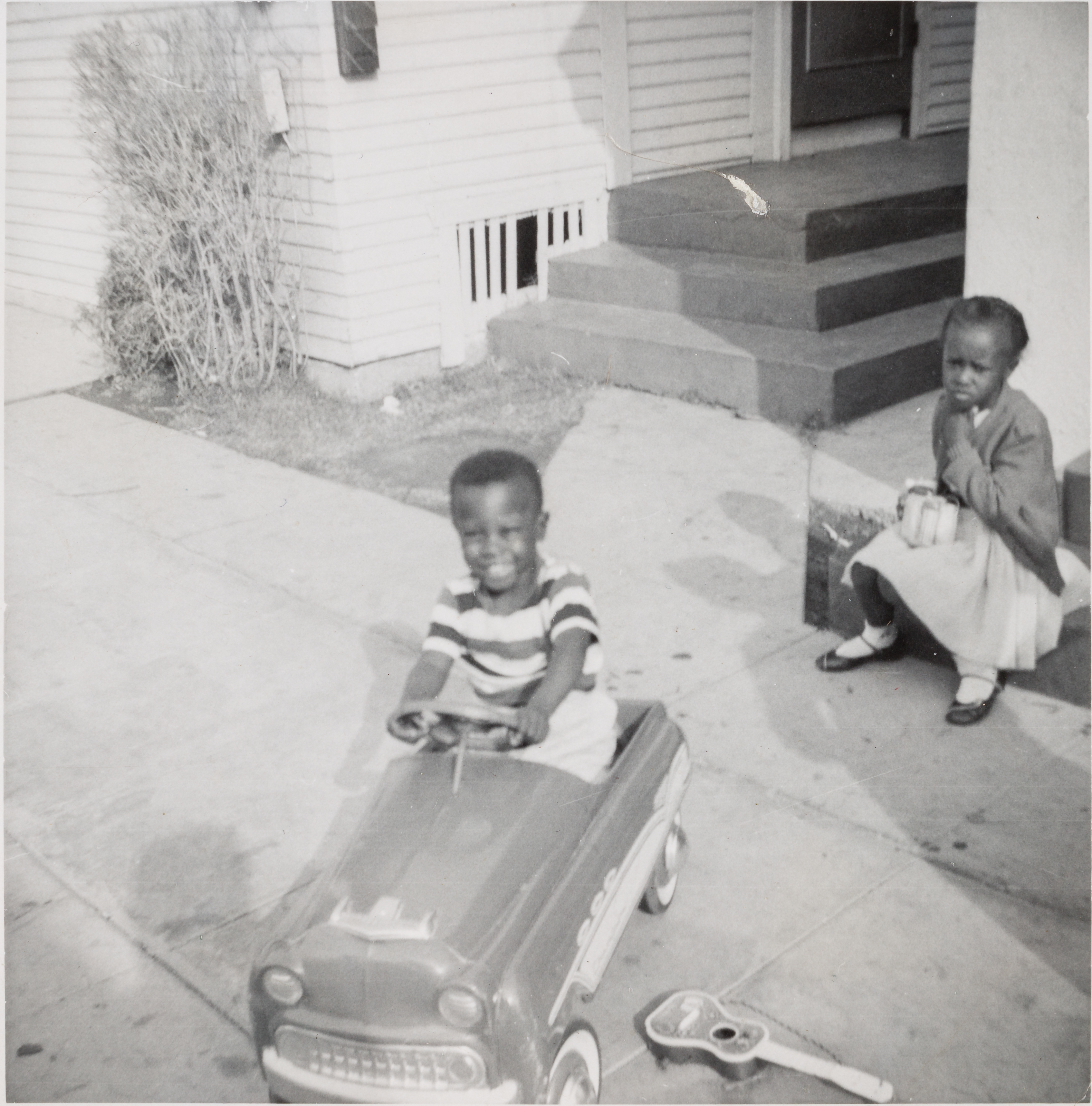 Untitled (Vernacular photograph), mid-twentieth century, gelatin silver print, Gift of Peter Cohen, Bowdoin College Museum of Art, (2016.51.166)
Untitled (Vernacular photograph), mid-twentieth century, gelatin silver print, Gift of Peter Cohen, Bowdoin College Museum of Art, (2016.51.166)Save
 Untitled (Vernacular photograph), mid-twentieth century, gelatin silver print, Gift of Peter Cohen, Bowdoin College Museum of Art, (2016.51.234)
Untitled (Vernacular photograph), mid-twentieth century, gelatin silver print, Gift of Peter Cohen, Bowdoin College Museum of Art, (2016.51.234)Save
 Untitled (Vernacular photograph), mid-twentieth century, gelatin silver print, Gift of Peter Cohen, Bowdoin College Museum of Art, (2016.51.5)
Untitled (Vernacular photograph), mid-twentieth century, gelatin silver print, Gift of Peter Cohen, Bowdoin College Museum of Art, (2016.51.5)Save
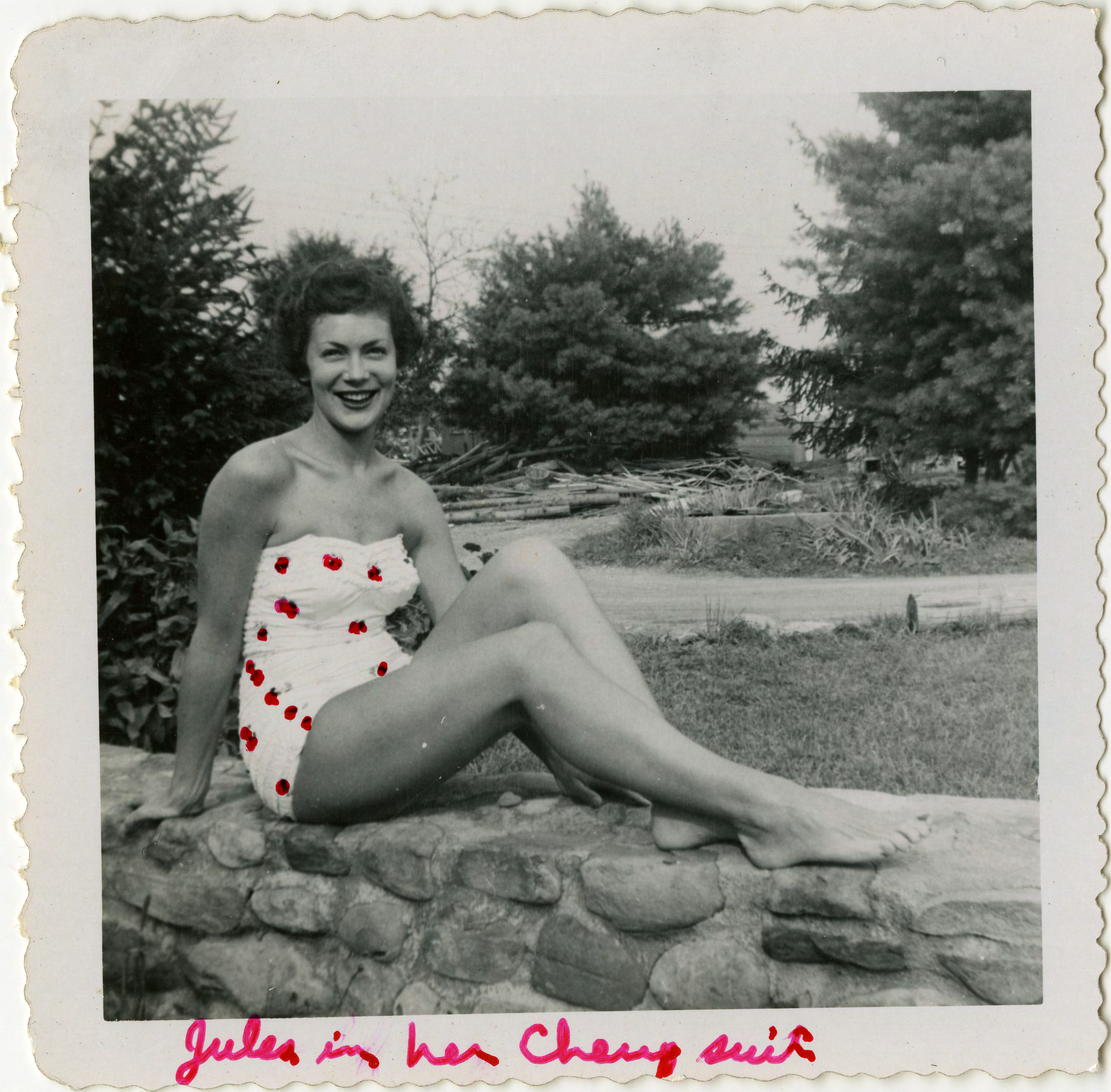 “Jules in her Cherry Suit”, ca. 1950, gelatin silver print. Gift of Peter Cohen. Bowdoin College Museum of Art, (2016.51.125)
“Jules in her Cherry Suit”, ca. 1950, gelatin silver print. Gift of Peter Cohen. Bowdoin College Museum of Art, (2016.51.125)Color film did not become widely used until the 1950s. Nevertheless, amateur snapshot photographers would often hand-tint or draw on their photographs to give them some color. Such is seen in the image below, titled “Jules in her Cherry Suit” which features playful cherry-red details on the woman’s bathing suit.

Taking inspiration from the picture “Jules in her Cherry Suit” above, imagine how you would colorfully illustrate this picture of two people gazing down at an expansive view of a national park. What color would you paint the sky? What about the mountain ranges or the people’s clothing?
Save
